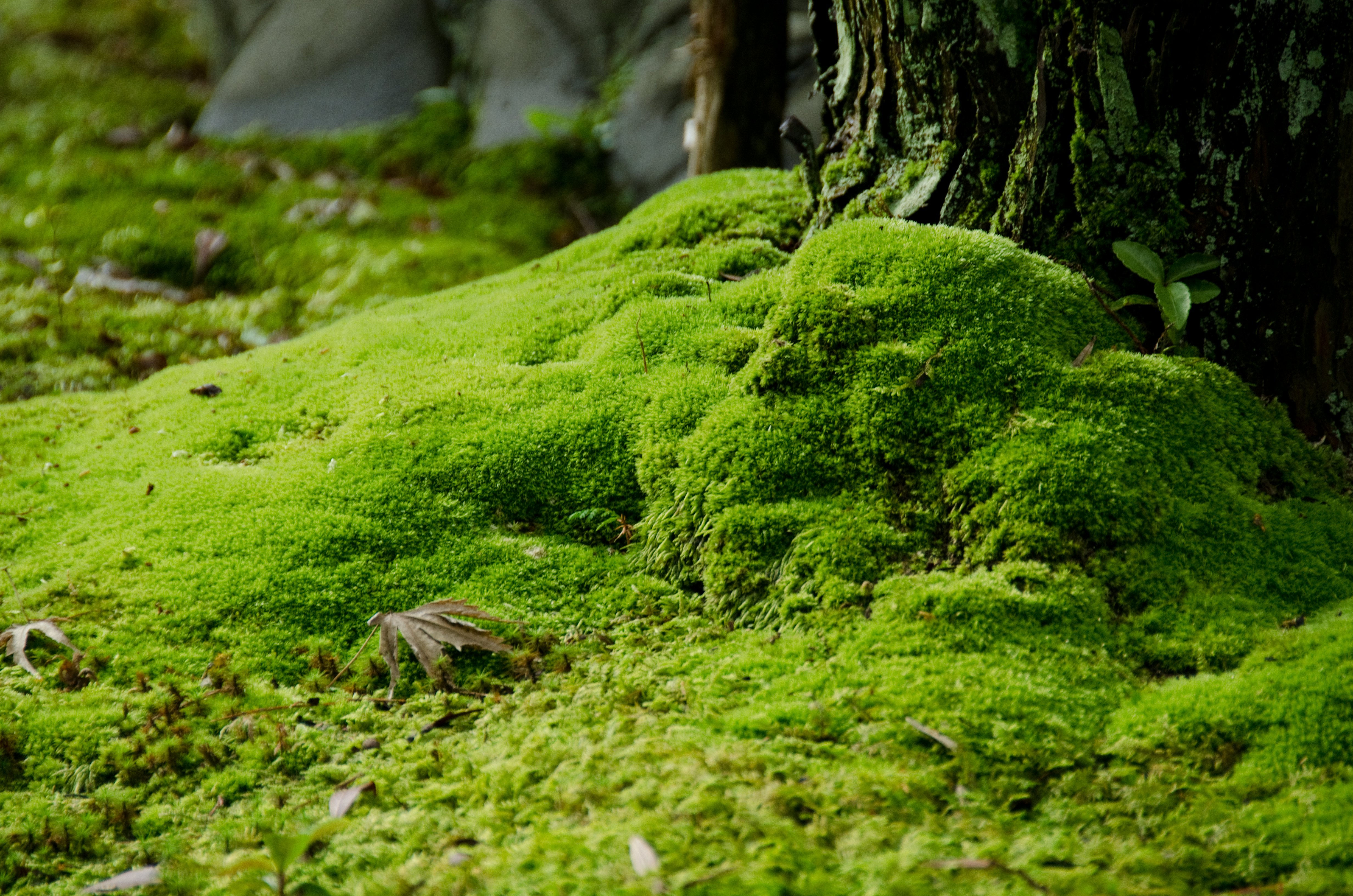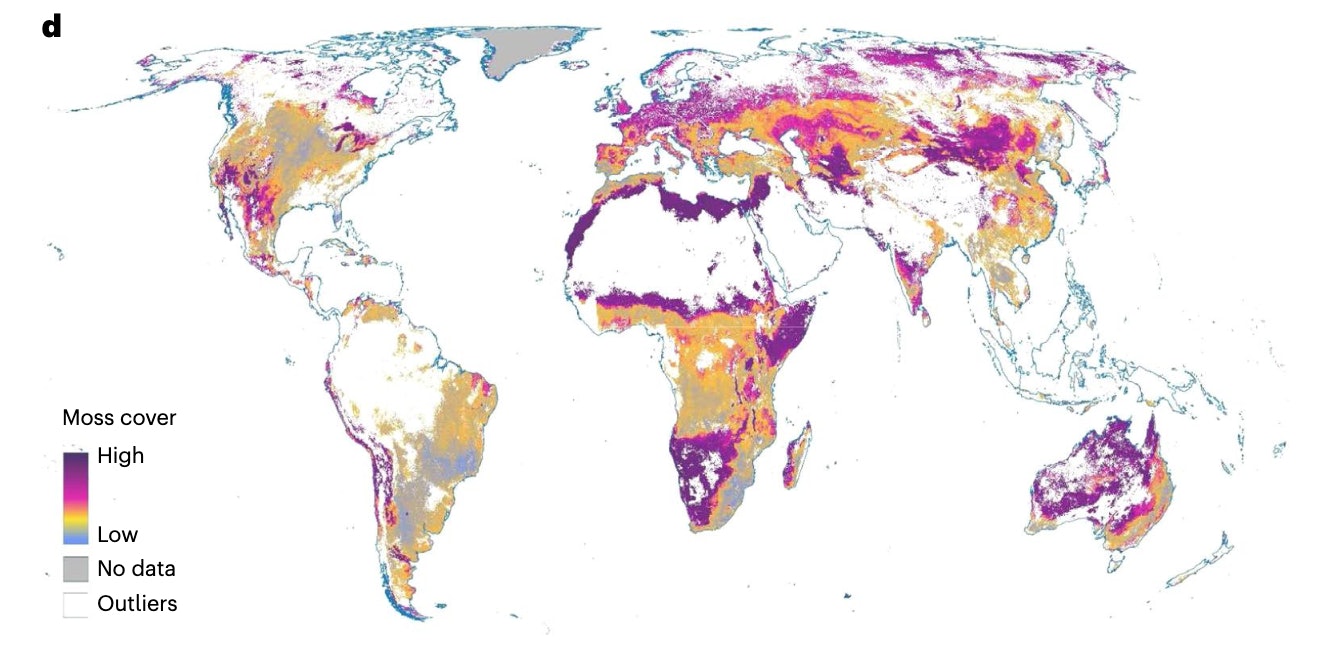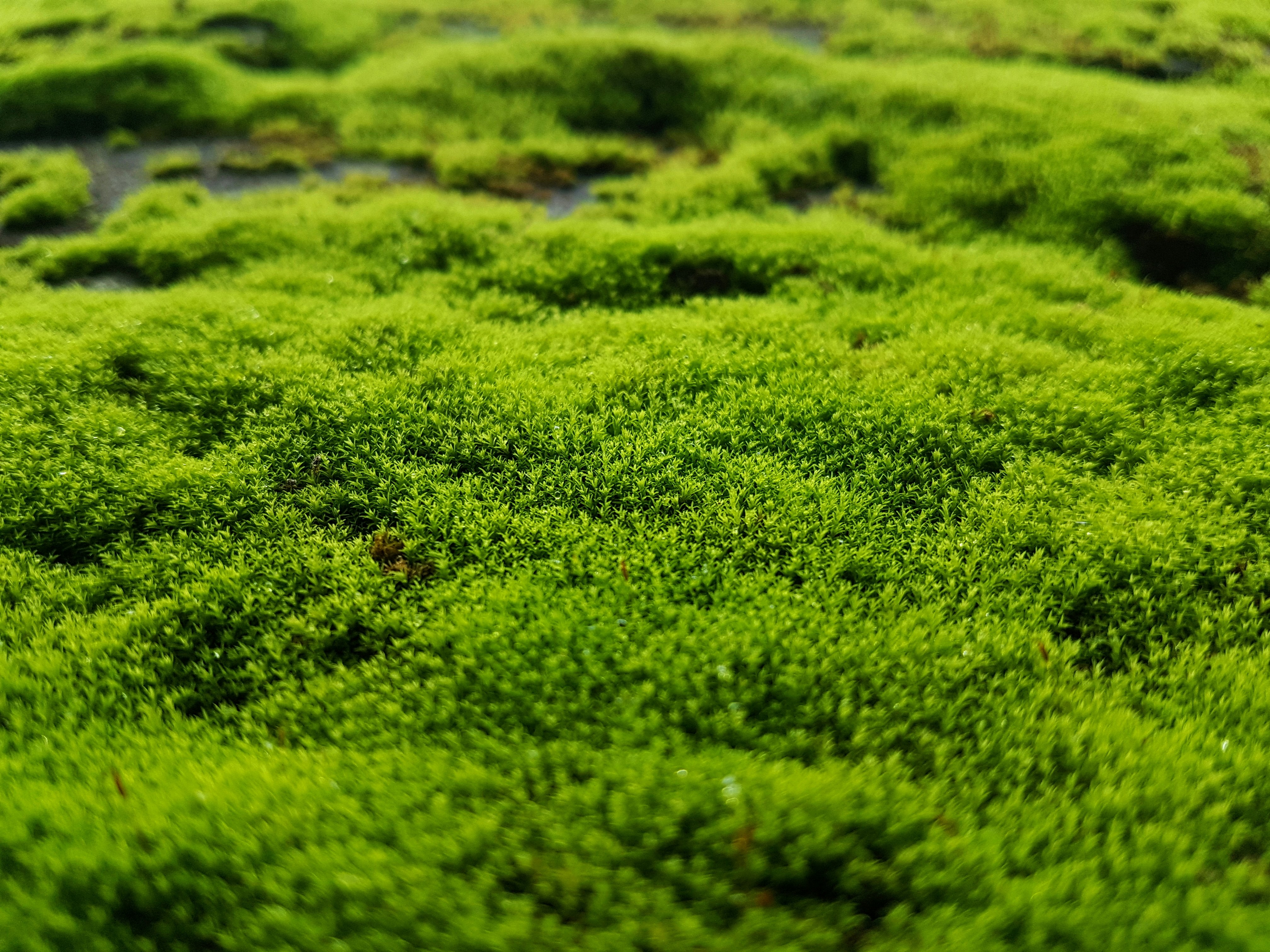
Considering it covers an area of Earth the size of Canada, moss gets relatively little scientific love compared to its plant peers.
Unlike vascular plants — which use tube-like tissues to transport water and nutrients — mosses have no such system and instead absorb water into their cells directly through osmosis. They also have highly visible spores — not seeds — for reproduction, not unlike fungi.
While scientists understand the importance of vascular plants in sequestering (or storing) carbon dioxide and helping maintain soil health, we know far too little about the comparable role mosses play in ecosystems around the world.
“Moss is very small, and people don't tend to notice them, although they grow everywhere, in cracks in the soil, in pavements, on walls, on trees, and on rotting vegetation. Because they're small, we don't think they're having much of an effect,” David Eldridge, an ecologist at the University of New South Wales, tells Inverse.
But that perception couldn't be further from the truth, according to Eldridge’s new research, which provides the first comprehensive global observational study on the distribution and role of moss on planet Earth.
As research shows, we should start paying more attention to moss because it’s seriously important for soil in ecosystems around the world — and it might even be a game-changer for climate change. The findings were published Monday in the journal Nature Geoscience.
Where Does Moss Grow?

In the Nature study, scientists produced the first global map of mosses using samples collected from 123 sites across all the world’s continents. They also analyzed the existing experimental scientific literature on mosses to draw further conclusions on the impact of moss on ecosystems around the planet. Moss can grow in nearly every nook of the world, ranging from arid deserts to boreal forests.
“No other studies have been conducted at a global scale, such as the one we did,” Eldridge says.
Even though we tend to associate moss with damp corners of the globe like wet forests in the Pacific Northwest of the U.S., scientists learned mosses actually tend to grow best in areas with limited rainfall like tundra or desert ecosystems, likely due to specialized leaf structures that help moss retain moisture in dry environments. Deserts and urban gardens supported the most annual moss species —which only live for a single growing season — whereas tundras and wet forests supported more perennial species that return every year.
These three regions of the world tend to support the highest moss cover in general:
- Dry regions of the western U.S.
- Tundra ecosystems in Europe
- Large deserts in Australia, Asia, Africa and South America
From their map, scientists concluded that mosses span more than 9.4 million square kilometers across planet Earth — an area comparable to Canada, the U.S., or China.
What Does Moss Do for the World?
For such a small plant, moss has a pretty big effect on soil ecosystems across the globe. The researchers found that mosses can help boost carbon sequestration, suppress harmful plant pathogens in soil, and cycle nutrients like phosphorous and nitrogen.
“Specifically, we found greater carbon content, more essential nutrients such as nitrogen, phosphorus and magnesium, soil enzyme activities and greater control...of soil-borne potential plant pathogens in the soils beneath mosses than in bare soils,” the researchers summarize.
Nitrogen, phosphorous, and magnesium are crucial elements that ecosystems need to grow, so mosses could be helping boost vegetation in different ecosystems.
The plant may even be an overlooked natural solution in efforts to tackle climate change. We know vascular plants can “sequester” or effectively draw down carbon through photosynthesis and store it in the soil, thereby preventing its release into the atmosphere. That’s an important function because carbon emissions are a leading cause of global warming.
Now, scientists have proof that mosses serve a similar role to their vascular peers. Eldrige’s team found that soil under mosses sequesters 6.43 gigatons more carbon dioxide in the soil compared to soil bare of mosses or other plants.
To put that figure into perspective: If 15 percent of moss cover on Earth became disturbed due to human development or climate change, the amount of carbon released into the atmosphere would be the same as — or greater than — the annual carbon emissions from all other human activities currently impacting the land such as agriculture or forestry.
Mosses, therefore, “probably play an important role in soil carbon sequestration,” the study authors conclude.
What Can We Do For Moss?

Compared to previous research on mosses, Eldridge says his team’s work is significant because no other studies have found “such positive effects of mosses on soils.”
The researchers acknowledge there are some limitations to the study. It's an observational study, not a controlled experiment, so we have to be cautious about making any conclusions about causation, such as moss causing a certain impact on an ecosystem.
“Nevertheless, despite these potential caveats, our global study reveals that mosses contribute to the maintenance of critical functions and services such as soil carbon sequestration,” the researchers conclude.
Now that we know mosses likely play a bigger role in soil health and carbon sequestration — a key tool in combating climate change — does that mean we need to be focusing more specifically on conserving moss and preventing its destruction? Eldridge thinks so but also says we can protect moss alongside broader conservation work in boreal forests or arid ecosystems with high moss cover.
“It's true that systems dominated by mosses probably deserve better conservation, but it's easier to conserve whole ecosystems,” Eldridge adds.
That’s where the scientist’s new map can come in handy by helping policymakers identify and prioritize areas with the greatest moss cover for conservation.
On a more scientific level, Eldridge and his study co-author Manuel Delgado-Baquerizo are also hoping to look further into the relationship between moss and urban gardens. It’s possible further research will reveal these spongy green plants are not only helping save the planet from climate change but also keeping your neighborhood park looking lush, too.
“We are examining in more detail some of the effects of mosses, and vascular plants, on the ability of urban green spaces to function effectively,” Eldridge says.







